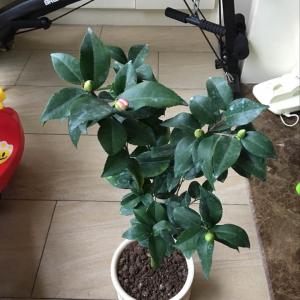动态 (175)
Zeev Kwan
2023年08月27日

Unveiling the Housing Landscape
1. Renting an Apartment
Pros:
- Flexibility: Renting offers the flexibility to relocate easily based on changing circumstances or job opportunities. - Minimal Maintenance: Landlords typically handle maintenance and repairs, relieving tenants of the associated responsibilities. - Amenities: Apartment complexes often provide amenities like fitness centers, pools, and communal spaces.Cons:
- Limited Equity: Rent payments do not contribute to building equity, making it a less financially rewarding option in the long term. - Rent Increases: Landlords can increase rent at the end of the lease term, potentially impacting affordability. - Restrictions: Renting may come with restrictions on decor, pets, and other personalizations.2. Owning a House
Pros:
- Investment: Homeownership builds equity over time, providing a potential financial asset. - Personalization: Homeowners have the freedom to personalize and modify their living space to suit their preferences. - Stability: Owning a house provides stability and a sense of community, especially for families.Cons:
- Maintenance Costs: Homeowners are responsible for maintenance and repairs, which can be costly. - Financial Commitment: The upfront costs of purchasing a home can be substantial, including a down payment, closing costs, and ongoing mortgage payments. - Less Flexibility: Selling a house can be time-consuming and may require a relocation commitment.Exploring Shared Living
1. Roommates
Pros:
- Cost Sharing: Sharing expenses, such as rent and utilities, can significantly reduce individual financial burdens. - Social Interaction: Living with roommates offers companionship and opportunities for socializing. - Shared Responsibilities: Chores and household tasks can be distributed among roommates.Cons:
- Compatibility: Compatibility with roommates can be a challenge, affecting living dynamics. - Privacy: Shared living spaces may limit privacy and personal space. - Conflict Resolution: Differences in living habits or preferences can lead to conflicts that need to be addressed.2. Co-living Spaces
Pros:
- Fully Furnished: Co-living spaces often come fully furnished, simplifying the moving process. - Community: Co-living spaces foster a sense of community and provide opportunities for networking and socializing. - All-Inclusive: Rent in co-living spaces typically covers utilities, internet, and shared amenities.Cons:
- Limited Personalization: Co-living spaces may have limitations on personalizing your living environment. - Noise and Crowding: The communal nature of co-living may result in noise or crowding at times. - Shared Spaces: Shared facilities like kitchens and bathrooms may require coordination and adaptation.Embracing Alternative Housing
1. Tiny Houses
Pros:
- Minimalist Living: Tiny houses promote a simpler, clutter-free lifestyle. - Eco-Friendly: Tiny houses often have a smaller environmental footprint. - Affordability: Building or purchasing a tiny house can be more cost-effective than traditional housing.Cons:
- Limited Space: Tiny houses offer limited living space, which may require adjustments. - Zoning and Regulations: Zoning laws and regulations may impact the feasibility of living in a tiny house. - Downsizing Challenges: Transitioning to a tiny house may require downsizing belongings significantly.2. Mobile Homes
Pros:
- Affordability: Mobile homes tend to be more affordable than traditional houses. - Mobility: Mobile homes offer the flexibility to relocate while still having a familiar living environment. - Community Living: Mobile home parks often provide a sense of community and shared amenities.Cons:
- Depreciation: Mobile homes can depreciate in value over time. - Land and Location: The availability of suitable land for mobile homes may be limited in certain areas. - Resale Challenges: Selling a mobile home can be more challenging than selling a traditional house.Choosing Your Path
The tapestry of living arrangements offers a myriad of options, each with its unique set of advantages and challenges. Whether you opt for renting an apartment, owning a house, sharing living spaces, or exploring alternative housing, the decision should align with your lifestyle, preferences, and financial goals. Consider your priorities, long-term plans, and the level of commitment you're comfortable with. With thoughtful consideration, you can select a living arrangement that enriches your daily life and contributes to your overall well-being.
文章
Zeev Kwan
2023年08月23日

Mastering the Art of Productivity
1. Prioritize Tasks with Precision
Effectively managing your workload starts with prioritization. Begin your day by identifying the most critical tasks that require your attention. Utilize techniques like the Eisenhower Matrix to categorize tasks based on their urgency and importance. Allocate your energy and time to high-priority tasks that align with your goals and contribute to your team's objectives. By focusing on what truly matters, you'll optimize your productivity and make significant strides towards success.2. Embrace Time Blocking
Time blocking is a powerful technique that involves segmenting your day into dedicated blocks of time for specific tasks. Create a structured schedule where you allocate focused time for tasks, meetings, and breaks. During your dedicated work periods, eliminate distractions and fully immerse yourself in the task at hand. This approach enhances your concentration and minimizes the risk of task-switching, ultimately boosting your efficiency.Cultivating an Optimal Work Environment
1. Organize Your Workspace
A cluttered workspace can impede your ability to focus and work efficiently. Invest time in organizing your workspace by decluttering, arranging essential tools within reach, and creating an environment that promotes productivity. A clean and organized workspace fosters a clear mind and empowers you to tackle tasks with greater concentration and effectiveness.2. Minimize Digital Distractions
Digital distractions, such as notifications and social media, can significantly hamper your productivity. Establish boundaries by silencing non-essential notifications during work hours. Consider using productivity tools that temporarily block distracting websites and apps. Prioritize deep work by allocating specific periods for focused tasks, during which you disconnect from digital distractions and fully engage with your work.Optimizing Time Management
1. Implement the Pomodoro Technique
The Pomodoro Technique involves breaking your work into focused intervals, typically 25 minutes, followed by a short break. This technique leverages the power of time pressure and rest intervals to enhance productivity. Set a timer for each work interval and immerse yourself in a task. After completing a few intervals, reward yourself with a longer break. This approach prevents burnout, maintains your energy levels, and maximizes your output.2. Delegate and Collaborate
Recognize that you don't have to tackle everything on your own. Delegate tasks that can be handled by others, and collaborate with colleagues to leverage collective expertise. Effective delegation frees up your time for tasks that align with your strengths and responsibilities. Collaboration not only lightens your workload but also fosters a sense of teamwork and shared success within the workplace.Maintaining Well-being for Sustained Productivity
1. Prioritize Self-Care
Productivity is closely linked to your overall well-being. Prioritize self-care by getting adequate sleep, engaging in regular physical activity, and maintaining a balanced diet. When you take care of your physical health, you enhance your energy levels and cognitive function. Additionally, practice mindfulness techniques, such as meditation or deep breathing, to manage stress and maintain a clear mindset.2. Set Realistic Goals
Setting achievable goals is essential for maintaining long-term productivity. Break down larger projects into smaller, manageable tasks. This approach prevents overwhelm and allows you to track your progress effectively. Celebrate your accomplishments along the way, as recognizing your achievements reinforces a positive outlook and motivates you to continue excelling.Evolving Towards Peak Performance
1. Continuously Learn and Adapt
Productivity is an ongoing journey that requires continuous learning and adaptation. Stay open to new tools, techniques, and strategies that align with your work style and goals. Attend workshops, read books, and seek inspiration from experts in your field. By embracing a growth mindset and remaining adaptable, you position yourself for sustained productivity and innovation.2. Reflect and Refine
Regularly reflect on your productivity strategies and assess their effectiveness. Identify areas where you excel and aspects that could be improved. Use this self-assessment to refine your approach and make necessary adjustments. Evolving your productivity tactics based on self-reflection ensures that you remain aligned with your goals and consistently enhance your output.Achieving Work Excellence
Navigating the realm of productivity is akin to unlocking a treasure trove of accomplishments. By mastering prioritization, optimizing your work environment, and cultivating effective time management techniques, you pave the way for peak performance. Remember that productivity isn't solely about churning out tasks—it's about creating a harmonious balance between work efficiency, personal well-being, and professional growth.
文章
Zeev Kwan
2023年08月20日

Unveiling the Journey
1. Self-Reflection and Exploration
The quest to find your passion begins with introspection and self-exploration. Take time to assess your interests, hobbies, and activities that bring you joy. Reflect on moments when you feel most engaged and fulfilled. What activities make you lose track of time? What topics captivate your curiosity? Engage in a variety of experiences and activities to discover new interests. Attend workshops, try different hobbies, and expose yourself to diverse fields. Embrace a mindset of curiosity and openness as you navigate this journey of self-discovery.2. Identify Your Strengths
Passions often align with your strengths and talents. Reflect on your skills and capabilities. What activities come naturally to you? What do others commend you for? Identifying your strengths can offer insights into potential areas where your passion lies. Consider seeking feedback from friends, family, or mentors. Sometimes, others can recognize strengths in us that we may overlook. This outside perspective can guide you towards uncovering your true passion.Nurturing Your Passion
1. Dive Deep into Curiosity
Passion is often fueled by a sense of curiosity and the desire to learn. Explore topics that intrigue you, even if they are unfamiliar. Read books, take online courses, or attend lectures on subjects that pique your interest. As you delve deeper into these areas, you may discover a hidden passion that resonates with your intellectual curiosity. Follow the path of exploration with an open heart and an eagerness to learn.2. Embrace Challenges and Growth
Passion is not just about pursuing activities that come easily; it's about embracing challenges and growth. Step out of your comfort zone and take on projects that push your boundaries. The process of overcoming obstacles and mastering new skills can ignite a genuine passion for the endeavor. Embracing challenges also allows you to experience a sense of accomplishment and progress, which are essential aspects of cultivating and nurturing your passion.Finding Purpose Through Passion
1. Align with Your Values
Passion often aligns with your values and beliefs. Consider the causes, issues, or principles that deeply resonate with you. What impact do you want to make in the world? Connecting your passion to a greater purpose can infuse your pursuits with meaning and fulfillment. When your passion aligns with your values, it becomes a driving force that propels you towards making a positive impact on the world around you.2. Embrace a Growth Mindset
Finding your passion is a journey that requires patience and a growth mindset. Embrace the idea that passions may evolve over time. Be open to refining your interests as you gain new experiences and insights. Approach your journey with a sense of flexibility and a willingness to adapt. Embracing change and growth enhances your capacity to uncover passions that resonate with your evolving sense of self.Nurturing a Lifelong Passion
1. Dedicate Time for Exploration
Allocate dedicated time for exploring your passion. Set aside moments each day or week to engage in activities related to your passion. Consistency is key to nurturing and deepening your connection to your chosen pursuit. Whether it's dedicating an hour to painting, learning a musical instrument, or studying a new language, regular engagement reinforces your passion and keeps the flame alive.2. Surround Yourself with Inspiration
Surrounding yourself with inspiration can fuel your passion. Connect with like-minded individuals who share your interests. Attend events, join clubs, or participate in online communities related to your passion. Engage in conversations with others who are passionate about similar topics. Exchanging ideas and experiences can provide fresh insights and perspectives that further ignite your passion.Embracing a Passion-Fueled Life
In the journey of life, discovering your passion is akin to finding a guiding star that illuminates your path. Through self-reflection, curiosity, and embracing challenges, you can uncover passions that resonate with your strengths, values, and aspirations. Remember that the pursuit of passion is a lifelong journey, and every step you take brings you closer to a more purposeful and fulfilled life.
文章
Zeev Kwan
2023年08月15日

Nurturing Positive Relationships
Positive relationships are the foundation of a fulfilling and joyful life. Whether they're with family, friends, colleagues, or romantic partners, nurturing and cultivating positive relationships enriches our well-being and contributes to our overall happiness. In a world where connections can sometimes feel fleeting, investing time and effort in building and maintaining positive relationships is of paramount importance. This article explores the key principles and practices for nurturing positive relationships and fostering lasting connections.Open and Honest Communication
Effective communication is the cornerstone of any healthy relationship. Open and honest communication forms the bedrock of trust, understanding, and emotional intimacy. It's essential to express your thoughts, feelings, and needs while actively listening to others. Transparency in communication ensures that both parties are on the same page, reducing misunderstandings and conflicts. When disagreements arise, approach them with empathy and a willingness to understand the other person's perspective. Avoiding assumptions and practicing active listening can lead to productive conversations that strengthen rather than strain the relationship. Remember that effective communication is a two-way street, and both parties play a role in fostering a communicative and harmonious connection.Empathy and Understanding
Empathy—the ability to understand and share the feelings of another—is a powerful tool for building positive relationships. When you empathize with someone, you're validating their emotions and showing that you care about their experiences. Empathy fosters a deep sense of connection and builds a supportive foundation for the relationship. To cultivate empathy, practice putting yourself in the other person's shoes. Listen without judgment, acknowledge their feelings, and offer reassurance. When you demonstrate genuine empathy, you're creating an environment where both parties feel valued and understood, leading to stronger bonds and a greater sense of closeness.Quality Time and Presence
In today's fast-paced world, carving out quality time for your relationships is essential. Spend meaningful, uninterrupted time with your loved ones, focusing on building memories and shared experiences. This might involve having deep conversations, engaging in shared hobbies, or simply enjoying each other's company without distractions. When you're together, practice being fully present. Put away your devices and truly engage in the moment. Show that you value the relationship by dedicating your attention and time to the person you're with. Quality time helps create positive memories and reinforces the idea that the relationship is a priority in your life.Respect and Boundaries
Respect forms the foundation of all healthy relationships. Treat others with kindness, consideration, and appreciation. Recognize that everyone has their own thoughts, feelings, and perspectives, and value their autonomy. Avoid belittling, criticizing, or dismissing the other person's opinions. Setting and respecting boundaries is equally important. Boundaries define the limits of acceptable behavior and help prevent feelings of resentment or discomfort. Discuss and establish boundaries openly, ensuring that both parties are comfortable with the agreed-upon terms. Respecting each other's boundaries fosters an environment of trust and safety.Conflict Resolution
No relationship is entirely devoid of conflicts. The key is to approach conflicts as opportunities for growth and understanding rather than as roadblocks. When conflicts arise, address them with a focus on resolution rather than blame. Practice active listening, express your perspective calmly, and work together to find common ground. Seeking compromise and understanding is crucial for maintaining a positive relationship. Sometimes, taking a step back to gain perspective can prevent conflicts from escalating. Remember that the goal is not to "win" the argument but to preserve the well-being of the relationship.Expressing Appreciation
Regularly expressing appreciation and gratitude strengthens the bond between individuals. Acknowledge the positive qualities of the people in your life and express your gratitude for their presence. Small gestures like a heartfelt thank-you note, a genuine compliment, or an unexpected act of kindness can have a profound impact on the relationship. Appreciation and gratitude create a positive feedback loop. When you show appreciation, you make the other person feel valued, which encourages them to reciprocate. This cycle of positive reinforcement enhances the connection and contributes to a nurturing and supportive relationship.Conclusion
Nurturing positive relationships requires effort, empathy, and dedication. By practicing open communication, empathy, spending quality time, respecting boundaries, addressing conflicts constructively, and expressing appreciation, you're creating an environment of love, trust, and mutual understanding. Positive relationships enrich our lives with joy, emotional support, and a sense of belonging. As you invest in nurturing these connections, you're not only enhancing your own well-being but also contributing to the well-being and happiness of those around you.
文章
相关用户
















